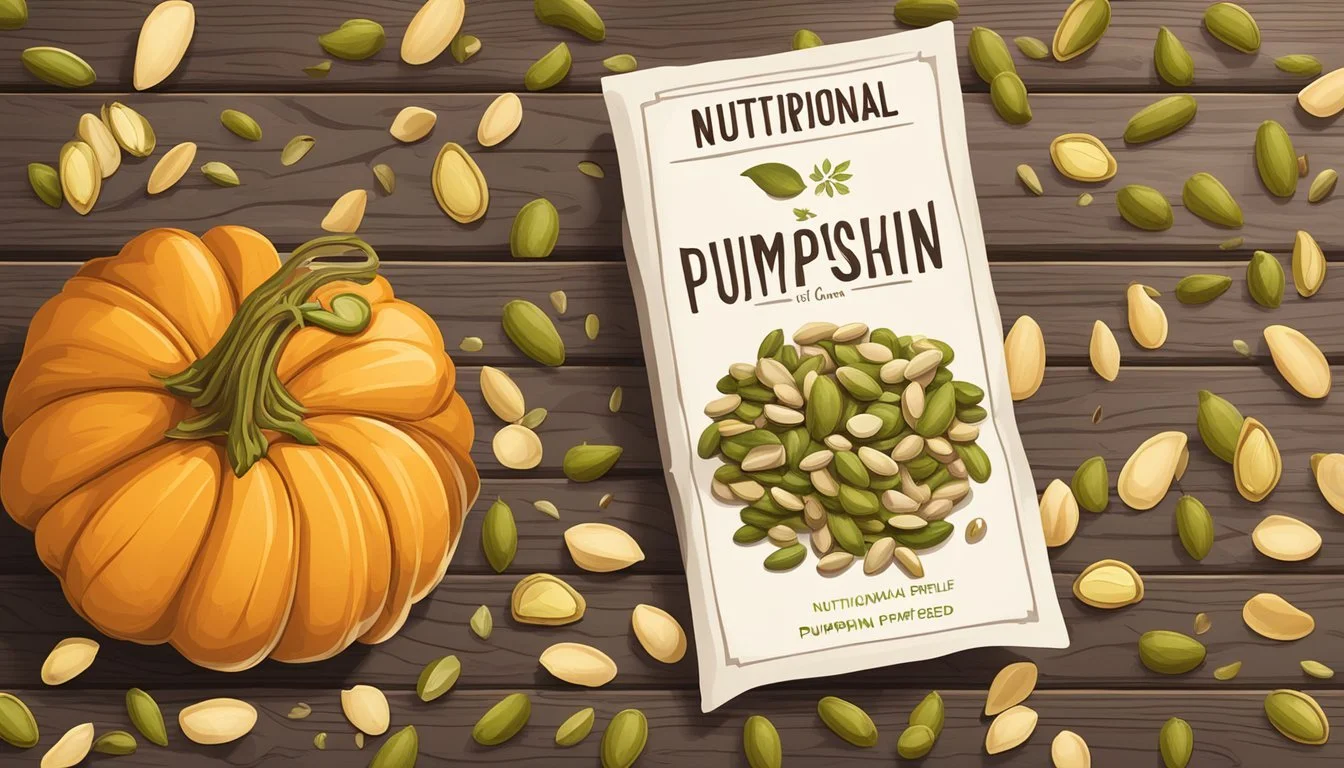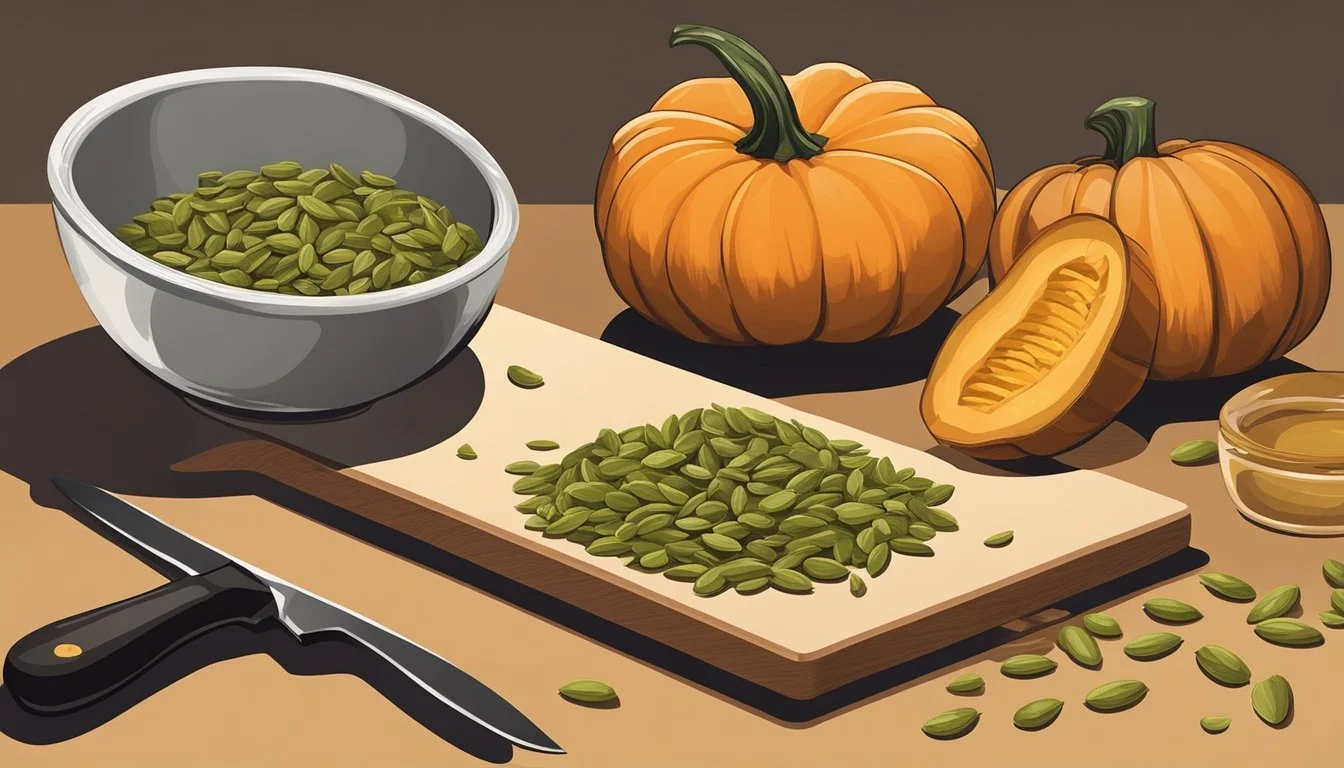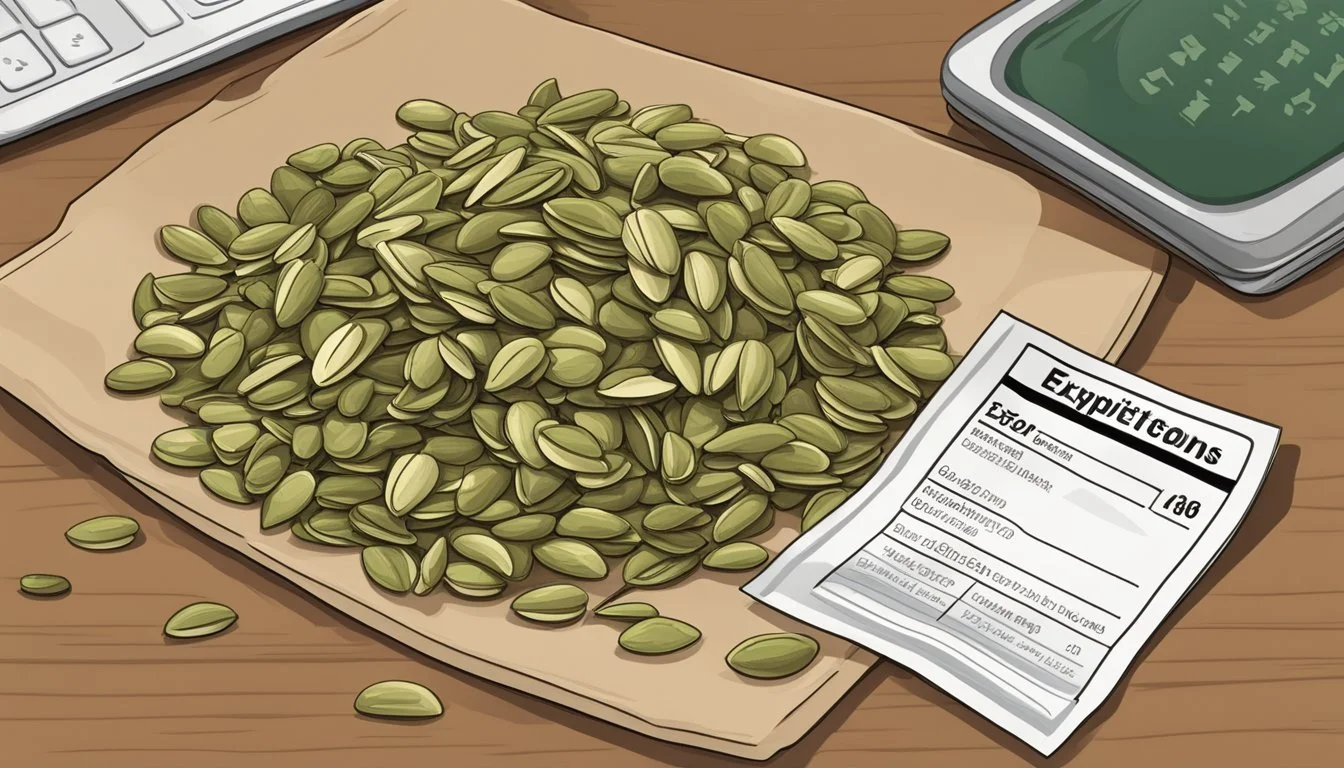Do Pumpkin Seeds Go Bad?
Shelf Life and Storage Tips
Pumpkin seeds, also known as pepitas, are a nutritious and versatile snack enjoyed by many. With their rich, nutty flavor and wealth of essential nutrients, they are a popular choice for health-conscious individuals. Yes, pumpkin seeds can go bad, and it's important to know how to identify when they have spoiled.
Pumpkin seeds typically last between three to six months when stored correctly. Signs that pumpkin seeds have gone bad include a rancid smell, mold growth, and changes in texture or taste. Proper storage is key to extending their shelf life, such as keeping them in an airtight container in a cool, dark place.
Despite their perishable nature, pumpkin seeds remain a valuable addition to diets when handled properly. Whether enjoyed raw, roasted, or added to various dishes, understanding their shelf life and how to store them can help maintain their freshness and nutritional benefits.
Nutritional Profile of Pumpkin Seeds
Pumpkin seeds, or pepitas, are powerful sources of essential nutrients and vitamins, making them a valuable addition to a healthy diet. They offer numerous health benefits, including support for heart health, blood sugar regulation, and reduced inflammation.
Essential Nutrients and Vitamins
Pumpkin seeds are rich in protein, fiber, and healthy fats. They contain a significant amount of magnesium, which is critical for muscle and nerve function. A 28-gram serving provides about 37% of the recommended daily intake (RDI) of magnesium.
Other notable minerals include zinc, iron, and phosphorus. Zinc is important for immune function and cell growth, while iron plays a crucial role in oxygen transport in the blood.
These seeds also offer a good amount of vitamin E, an antioxidant that helps protect cells from damage. Additionally, pumpkin seeds include small amounts of calcium and selenium, contributing to overall bone health and antioxidant defenses respectively.
Health Benefits of Pumpkin Seeds
Pumpkin seeds have various health benefits supported by science. They are linked to better heart health due to their high magnesium content, which can help lower blood pressure. They are also beneficial for blood sugar management, contributing to lower blood sugar levels.
The anti-inflammatory properties of pumpkin seeds, thanks to their rich antioxidant profile, aid in reducing inflammation in the body. These properties may also support prostate health and reduce the risk of certain cancers.
Including pumpkin seeds in the diet can promote healthy digestion due to their high fiber content. Furthermore, the presence of healthy fats makes them great for maintaining good cholesterol levels and overall heart health.
Optimal Storage Conditions for Pumpkin Seeds
Proper storage conditions can significantly extend the shelf life of pumpkin seeds. Key factors include controlling temperature and humidity, and selecting the right container to prevent exposure to air and moisture.
Effect of Temperature and Humidity
Pumpkin seeds should be stored in a cool, dry, and dark place. Temperature plays a crucial role; ideally, storage temperatures should range between 35°F to 40°F. Higher temperatures can cause the seeds to go rancid more quickly.
Moisture is another critical factor. Seeds should be kept in an environment with low humidity (around 40%) to prevent mold growth. Any exposure to humidity can trigger the seeds to spoil or germinate prematurely.
Choosing the Right Storage Container
When storing pumpkin seeds, an airtight container is essential. Containers like glass jars or freezer bags are recommended as they effectively block moisture and air. Ensuring the container is properly sealed can significantly help extend the seeds' shelf life.
For even longer shelf life, pumpkin seeds can be kept in the refrigerator or freezer. Freezing the seeds in a freezer bag can preserve their quality for several months. Whether stored in a pantry or frozen, consistently using air-tight storage methods is crucial to maintaining freshness.
Shelf Life and Signs of Spoilage
Pumpkin seeds have a relatively long shelf life when stored properly, but various factors can cause them to spoil. Understanding the signs of freshness and spoilage is vital to ensure you consume healthy, flavorful seeds.
Determining the Freshness
The shelf life of pumpkin seeds often depends on storage conditions. When kept in an airtight container in a cool, dark place, seeds can remain fresh for six months to one year. Refrigeration extends their lifespan up to two years. Roasted pumpkin seeds might have a slightly shorter shelf life due to the added exposure to heat during the roasting process.
To check for freshness, pay attention to the seeds' texture and flavor. Fresh pumpkin seeds should have a crisp texture and a rich, nutty flavor. Any deviation, such as a stale or off taste, may indicate that the seeds are no longer nutritious or safe to eat.
Indicators of Rancidity and Mold
Rancidity and mold are primary signs that pumpkin seeds have gone bad. Rancidity occurs when fats in the seeds start to break down, often due to exposure to air, light, or a heat source. Common indicators include a rancid smell—a sharp, unpleasant odor—and changes in texture. The seeds may feel sticky or oily.
Mold growth can be identified by visible discoloration or fuzzy white, green, or black spots on the seeds. An unpleasant odor accompanying these visual changes is a critical sign of spoilage. If any of these signs are present, the seeds should be discarded to avoid potential health risks.
Understanding these signs and storage methods can help maintain the longevity of your pumpkin seeds, ensuring they remain a delicious and nutritious snack.
Methods for Extending Shelf Life
Proper storage methods can significantly extend the shelf life of pumpkin seeds, ensuring they remain fresh and nutritious for longer periods. Utilizing refrigeration and freezing techniques and following best practices for roasting and storage are essential.
Refrigeration and Freezing Techniques
Refrigeration can help extend the freshness of pumpkin seeds by maintaining a low temperature that slows down spoilage. Storing seeds in an airtight container within the refrigerator prevents moisture and external odors from affecting them.
Freezing pumpkin seeds is another effective method. Place seeds in a freezer bag and seal tightly to avoid freezer burn. This method can significantly prolong their shelf life, sometimes up to a year.
Before freezing, ensure the seeds are completely dry. Freezing damp seeds leads to ice formation, which can damage their texture and flavor upon thawing.
Tips for Roasting and Storing Pumpkin Seeds
Roasting pumpkin seeds not only enhances their flavor but also reduces moisture content, which helps in prolonging their shelf life. Start by cleaning and drying the seeds thoroughly. Preheat the oven to 300°F (150°C) and spread the seeds in a single layer on a baking sheet. Roast for about 20-30 minutes, stirring occasionally, until they are golden brown.
Storage is crucial for roasted pumpkin seeds. Once roasted, allow them to cool completely before placing them in an airtight container. Store in a cool, dark place to prevent exposure to light and heat, which can accelerate spoilage. For even longer storage, consider refrigerating or freezing the roasted seeds using the methods discussed earlier. This helps maintain their quality and extends their shelf life.
Culinary Uses of Pumpkin Seeds
Pumpkin seeds, known as pepitas when shelled, offer a versatile addition to a variety of dishes. These seeds can be enjoyed raw, roasted, or integrated into meals for added nutrition and texture.
Adding Pumpkin Seeds to Your Diet
Incorporating pumpkin seeds into your diet is simple and can enhance various recipes. Salads benefit from the crunch and nutritional boost that raw or roasted pumpkin seeds provide. Pumpkin seeds can be sprinkled directly over fresh greens, adding both flavor and texture.
For breakfast, consider adding pepitas to granola or yogurt. This not only boosts freshness but also contributes dietary fiber and essential fatty acids. They also work well in smoothies when ground, providing a nutty taste and added nutrients.
In baked goods such as cookies, muffins, or bread, pumpkin seeds add a delightful crunch. They can be folded into the batter or used as a topping.
Creative Cooking Ideas with Pumpkin Seeds
There are numerous inventive ways to use pumpkin seeds in cooking. Roasting them with spices such as cinnamon or chili powder makes a delicious snack or soup topping. Roasted pumpkin seeds are also excellent when used as a crust for meats like lamb or chicken, adding both flavor and texture.
Use crushed pumpkin seeds to create a crunchy coating for fish fillets. This not only adds texture but also infuses the dish with a nutty flavor.
Pumpkin seeds can be blended into pesto for a unique twist on the classic sauce. When sprouted, they can be added to salads for a crisp and fresh element.
For those who enjoy cooking with pumpkin seeds, making a simple nut butter spread is a creative option. Blend the seeds until smooth, adding a touch of oil to reach the desired consistency. This spread works well on bread or as a dip for vegetables.
With these methods, pumpkin seeds can become a staple in everyday cooking, enhancing both flavor and nutritional value.
Selecting and Purchasing Pumpkin Seeds
Choosing the right pumpkin seeds involves considering factors such as organic versus non-organic varieties and carefully reading product labels to ensure you get quality seeds that meet your needs.
Organic Versus Non-Organic Varieties
When selecting pumpkin seeds, buyers often face a decision between organic and non-organic varieties. Organic pumpkin seeds are grown without synthetic pesticides or fertilizers, which can be a significant advantage for those looking to reduce their chemical intake. Additionally, organic products are often considered better for the environment as they promote sustainable farming practices.
Non-organic pumpkin seeds may be more accessible and cost-effective. They can also have a longer shelf life due to the use of preservatives. However, the presence of chemical residues can be a potential concern for some consumers.
Ultimately, the choice between organic and non-organic depends on individual preferences, dietary needs, and budget.
Reading Labels for Product Information
Reading labels is essential when purchasing pumpkin seeds. Key information to look for includes the expiration date, storage recommendations, and nutritional content. Freshness is critical, as stale seeds may have a bitter taste and reduced nutritional value.
Labels also provide details on the seed variety. For instance, pepitas are shelled pumpkin seeds typically used in snacks and recipes.
It's also important to check for allergen warnings and country of origin. Some seeds may be processed in facilities that handle tree nuts or other allergens. Information on where the seeds are sourced can indicate quality and adherence to specific agricultural standards.
Careful label examination ensures that the pumpkin seeds you select will be fresh, safe, and nutritious.
Health Considerations and Dietary Restrictions
Pumpkin seeds offer numerous health benefits, including being rich in nutrients, but certain considerations must be taken into account, such as potential allergic reactions and the need to moderate intake based on nutritional content.
Allergic Reactions and Intolerances
Few individuals experience allergic reactions to pumpkin seeds, but it can happen. Symptoms may include itching, hives, and swelling. In severe cases, it could lead to anaphylaxis, requiring immediate medical attention. Those with a known allergy to nuts or seeds should exercise caution. It's advisable to consult a healthcare provider if any reaction occurs.
People with seed intolerances might also experience digestive issues, such as bloating or discomfort. Ensuring the seeds are unsalted and free from additives can help mitigate these symptoms. If concerns arise, contacting a nutritionist for personalized advice is beneficial.
Moderating Intake Based on Nutritional Content
Pumpkin seeds are rich in protein, fiber, and healthy fats. A 1-ounce serving typically provides about 9 grams of protein and significant amounts of nutrients like magnesium, zinc, and iron.
While they are low in sugar, consuming large quantities can lead to an excessive intake of calories and carbohydrates. It's recommended to keep portion sizes in check, especially for those monitoring their caloric and fat intake. Salted pumpkin seeds should be consumed sparingly due to their high sodium content, which can affect blood pressure.
Balancing pumpkin seeds with other nutrient-dense foods such as fruits and vegetables ensures a well-rounded diet. Adding them to recipes like salads or oatmeal can be an easy way to incorporate these seeds without overindulging.









